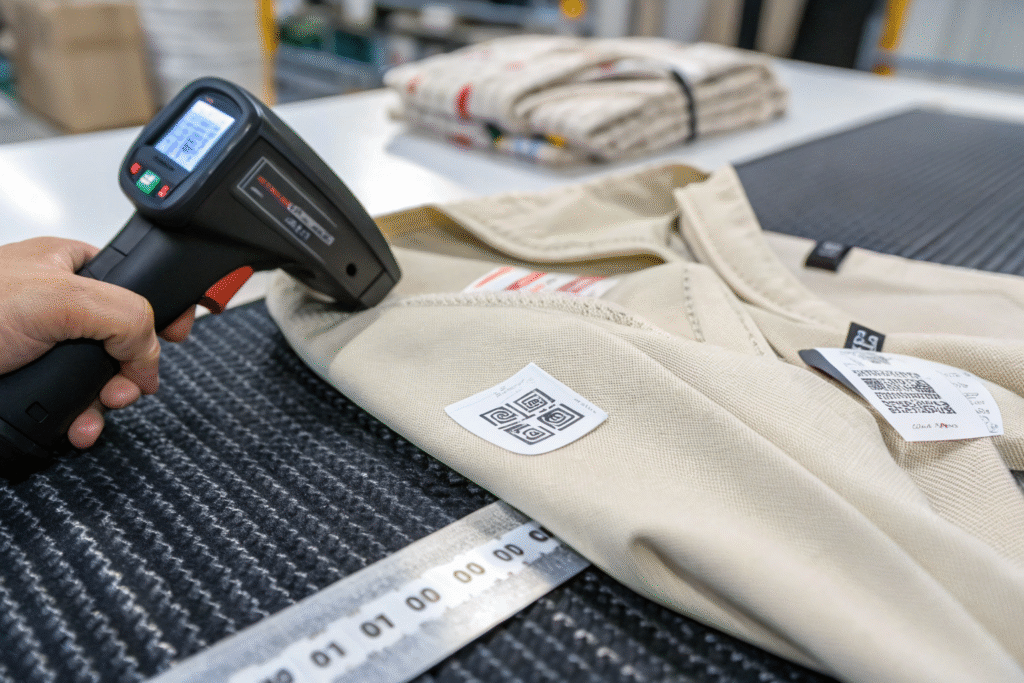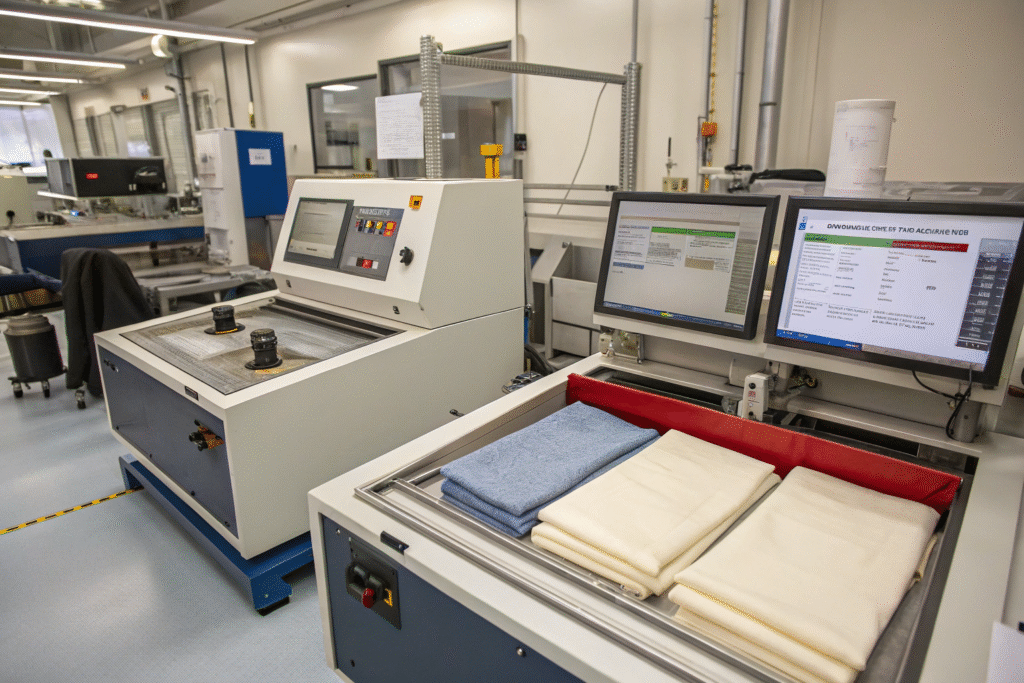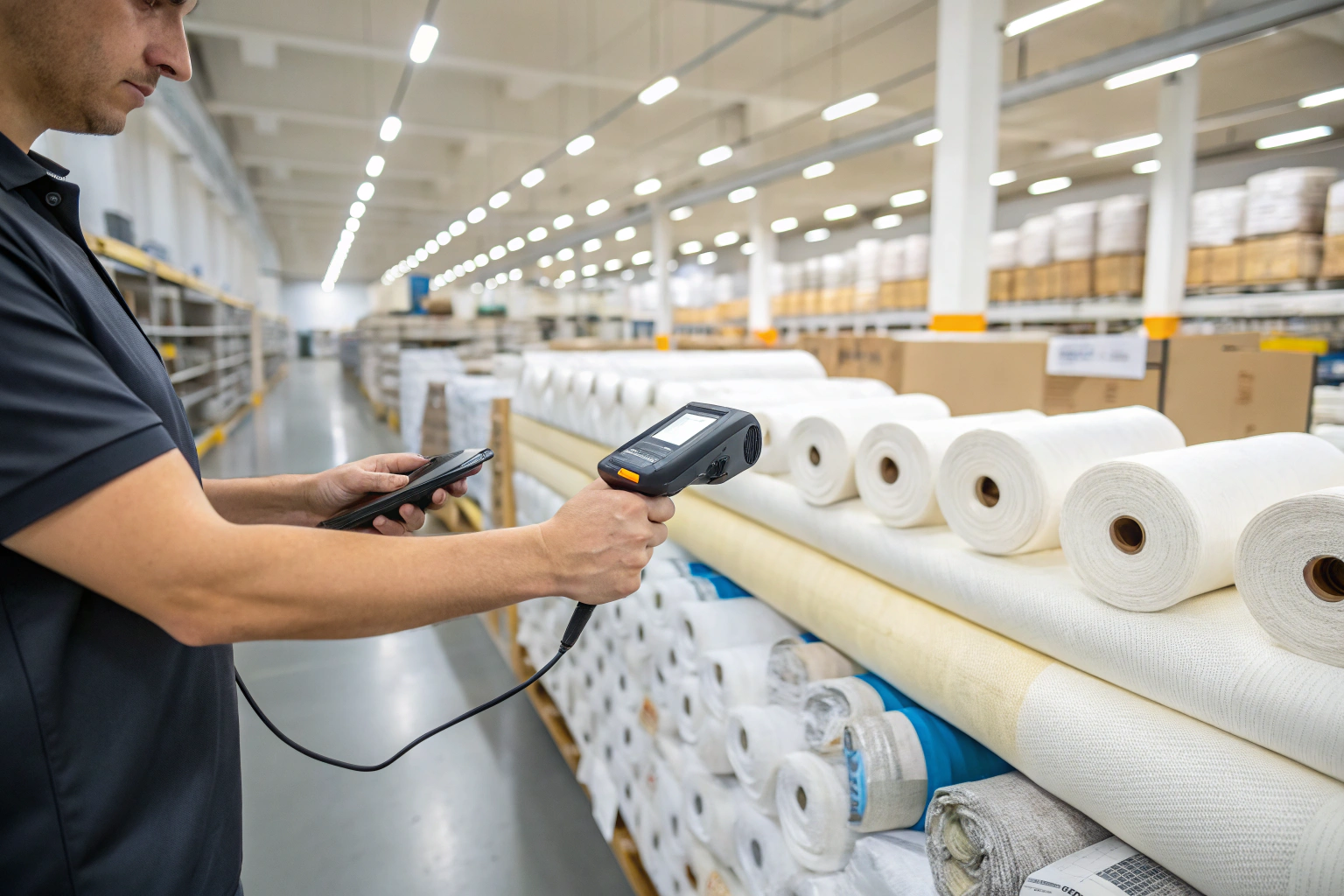In today’s hyperconnected supply chain, retailers are under pressure to track every garment in real-time—from origin to shelf. But barcodes alone don’t cut it anymore. Retailers demand more than just aesthetics and cost—they want traceability, inventory precision, and customer experience innovation. That’s where RFID-integrated smart fabrics come in.
RFID-enabled textiles are the future of apparel logistics, retail management, and product security. From anti-theft to instant inventory, these fabrics empower brands with data-driven visibility. But sourcing them isn’t as simple as buying plain yardage. You need compliance, durability, and integration-ready solutions—directly from the fabric stage.
At Fumao Fabric, we’ve started embedding washable, high-frequency RFID chips directly into base fabrics during weaving or lamination. This allows seamless product traceability from loom to store. And with major buyers in the U.S. and EU rolling out RFID mandates, sourcing smart fabrics is no longer a future plan—it’s a competitive necessity.
What Are RFID Smart Fabrics and How Do They Work?
RFID (Radio Frequency Identification) smart fabrics embed electronic tags that communicate wirelessly with scanners.
These fabrics contain RFID inlays (passive or active chips) bonded or woven into textiles. When scanned, each tag transmits a unique digital ID, enabling inventory tracking, loss prevention, and checkout automation.

Why Choose RFID Integration at the Fabric Stage?
Most brands add RFID at the label or tag level—but that’s easy to remove. Fabric-level RFID provides:
- Anti-counterfeiting protection
- Embedded traceability throughout production
- Wash/dry durability (tested to 30+ cycles)
This level of control appeals to smart retail leaders like Zara and Decathlon, who’ve fully adopted RFID-integrated merchandise.
What Types of RFID Tags Are Used in Smart Fabrics?
The most common types include:
| Tag Type | Frequency | Application |
|---|---|---|
| UHF Passive | 860–960 MHz | Inventory + Logistics |
| HF/NFC | 13.56 MHz | Consumer Interaction |
| Washable Chipless | Varies | Low-cost, mass-market items |
Check Avery Dennison’s RFID portfolio and SML RFID for globally certified inlays.
Which Retail Sectors Benefit Most from RFID Fabrics?
RFID-enabled textiles aren't just for high-end fashion. They're already being adopted across multiple segments.
From sportswear to uniforms and even children’s apparel, RFID fabrics are boosting efficiency in sectors where SKU volumes are high and turnaround time is critical.

How Do Sportswear and Athleisure Brands Use RFID?
Sportswear brands like Nike use RFID for store-level inventory accuracy. Embedding RFID into performance fabrics allows:
- Real-time size availability
- Self-checkout via phone tap (NFC)
- Easy restocking alerts
This reduces shrinkage and improves sell-through rates in outlets and flagship stores.
What Role Do RFID Fabrics Play in Uniform Supply Chains?
Logistics and medical uniforms benefit from RFID too. Hospitals in the U.S. have begun using RFID laundry systems to track scrubs by user, reducing theft and cross-contamination.
By sourcing smart polyester or blended fabrics with sewn-in RFID chips, distributors streamline:
- Laundering return cycles
- Item ownership logs
- Compliance with hygiene standards
How to Ensure RFID Fabrics Meet Durability Standards?
RFID textiles must be tested for performance after integration—especially in industrial wash, ironing, and abrasion conditions.
Sourcing from a mill that performs ISO and AATCC-compliant RFID durability testing is key. Otherwise, your tags may fail mid-lifecycle.

Which Tests Are Critical for RFID Smart Fabrics?
You’ll want your supplier to conduct:
- ISO 6330 wash durability (up to 60°C)
- ISO 13934-1 tensile strength with embedded chip
- AATCC TM 8 colorfastness to wet testing with embedded layers
See Bureau Veritas RFID test scope and TÜV SÜD textile electronics labs.
What Fabric Constructions Are Best for RFID Integration?
While RFID can be added to most textiles, we’ve seen best success with:
| Fabric Type | RFID Method |
|---|---|
| Woven Polyester | Laminated NFC inlay |
| Nylon Tricot | Elastic RFID pocket |
| Spandex blends | Heat-sealed patches |
| Denim | Button RFID loop |
Fumao’s own lab embeds RFID directly between two layers of lamination film or in warp threads for durable repeat use.
What Should Retail Buyers Ask When Sourcing RFID Fabrics?
Sourcing RFID fabrics requires more diligence than typical orders.
From frequency specs to supply chain integration, buyers should vet RFID compatibility, testing, certification, and production reliability.

Which Certifications and Protocols Should Suppliers Provide?
Request:
- RFID tag certification (e.g., EPC Gen2, ISO/IEC 18000-6C)
- OEKO-TEX or REACH testing (for adhesives and lamination film)
- GS1 standard compliance for inventory systems
- Wash test logs by Intertek
These documents confirm not just chip function—but also chemical and environmental safety.
How Can RFID Smart Fabrics Improve E-Commerce Fulfillment?
For omnichannel brands, RFID textiles solve:
- Faster item picking (no barcode scan needed)
- Reduced packing errors (scan bulk bins)
- Efficient returns processing with fabric-level ID
Brands like Uniqlo use this tech to manage real-time fulfillment and inventory drops across online and offline stores.
Conclusion
RFID-integrated smart fabrics are transforming retail logistics, inventory management, and customer experience—far beyond simple hang tags. Embedding these capabilities at the fabric level unlocks secure traceability, automation, and scalability.
At Fumao Fabric, we offer custom RFID-inlay options with ISO-tested durability, NFC compatibility, and full ERP integration support. Whether you’re sourcing uniforms, athleisurewear, or intelligent packaging solutions—we’re ready to help.
Interested in bringing RFID innovation to your product line? Contact our Business Director Elaine at elaine@fumaoclothing.com to explore RFID fabric sourcing today.










